Pictures › Wildlife › People & Places › Country Know-how › Food
OAK TO MOUNTAIN
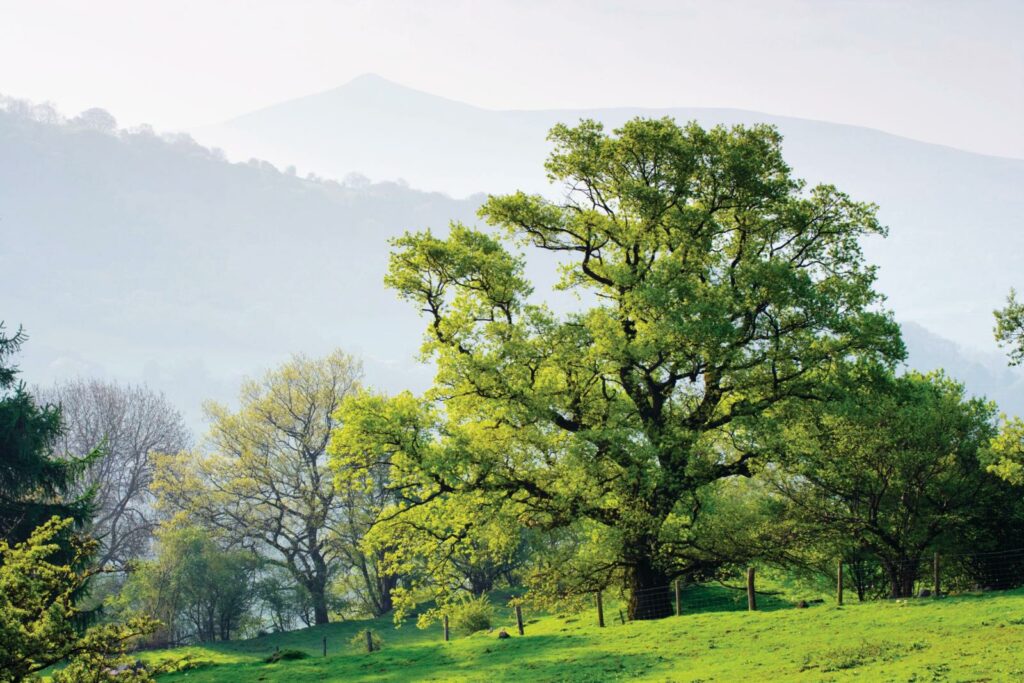
A mighty oak stands resplendent in the foreground as Sugar Loaf, looming behind, demonstrates what heady height really looks like. Taken in Crickhowell, Powys, this image draws the eye from the tree’s fresh-leaf luminosity to the dark volcanic-shaped mountain in the distance, challenging viewers to strike out to that far peak. Sugar Loaf stands at 596m, one of the highest peaks in the Black Mountains – which, despite the name, are formed from red sandstone.
RISING HIGH
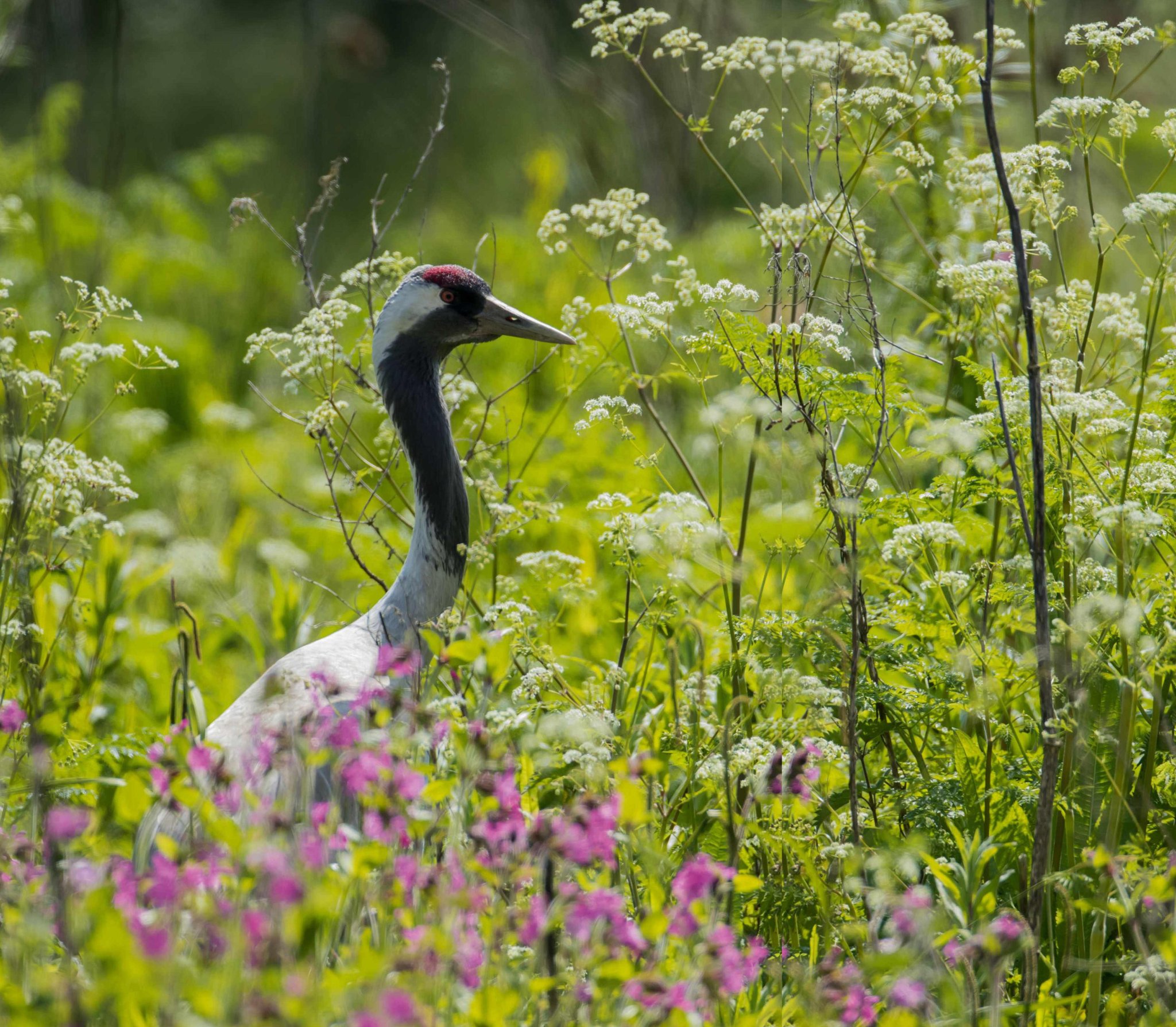
The UK’s tallest bird enjoyed another successful year in 2022, with numbers of common cranes bouncing back since their extinction in the UK in the 16th century. The latest survey reveals a fantastic 71 pairs across the UK in 2022, with the population estimated at over 200 birds. Cranes are making a comeback thanks to restoration and protection of their habitats. However, proposed changes to UK legislation could result in the loss or weakening of the laws that have supported the excellent conservation work done so far.
MAY TREE
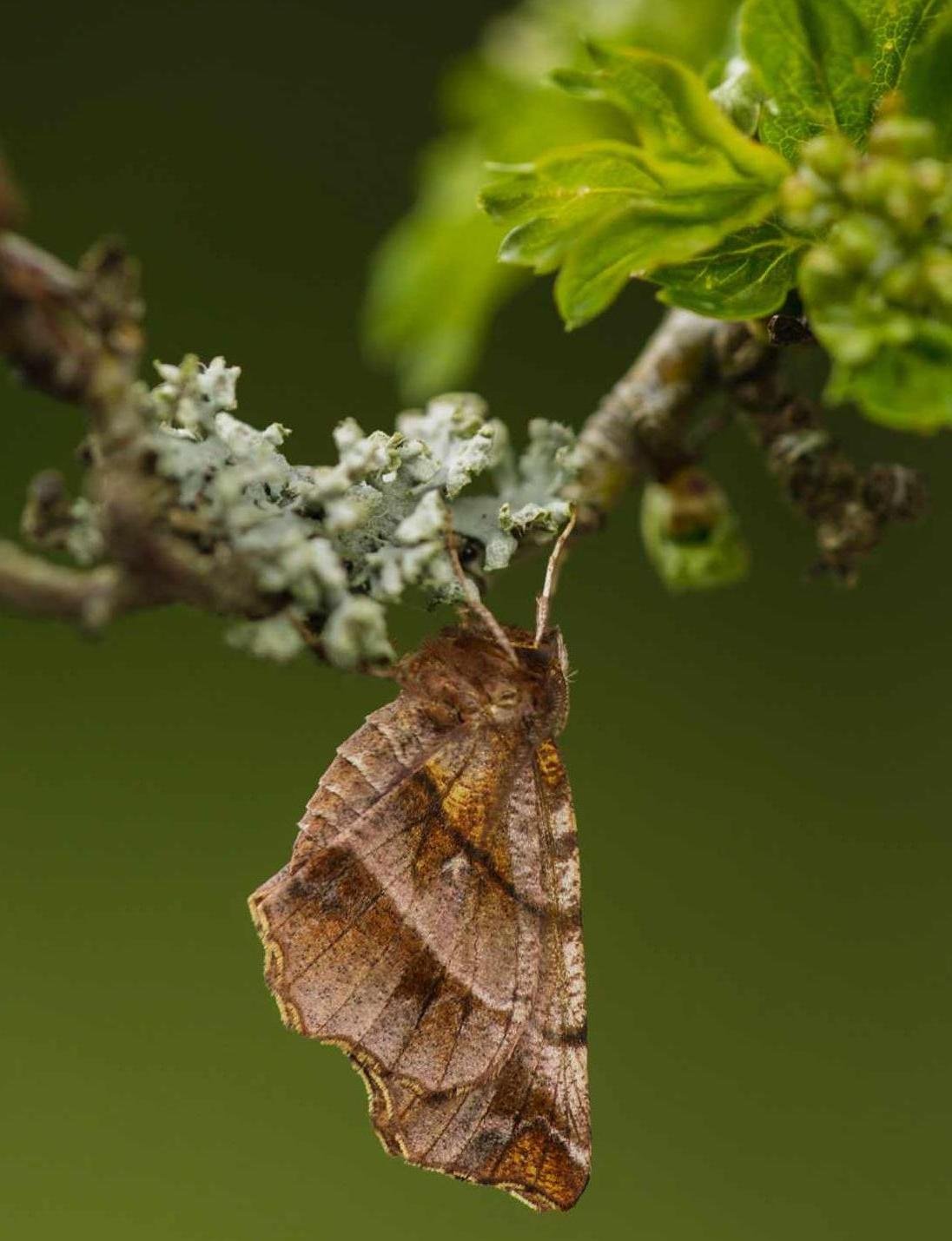
Named after the month in which it blooms, hawthorn is a key food plant for some 300 insects. It supports caterpillars of moths, including the early thorn (pictured), orchard ermine, light emerald, lackey, vapourer and lappet moths. Its creamy-white flowers are eaten by dormice and provide nectar and pollen for bees and other pollinators. Rich in antioxidants, haws are eaten by migrating birds, such as redwings, fieldfares and thrushes, as well as small mammals, in autumn and winter. A fine year-round feast for wildlife.
MUST-SEE
TANTALISING TULIPS
It’s all go this month in Britain’s gardens, and one of the stars of the show is the cheery tulip. So dazzling are these spring bloomers that a host of festivals have been dedicated specifically to them. Here are a few to look out for…

Listen!
David Maxwell visits Glenarm Castle for the Tulip Festival in Gardeners’ Corner. Available on BBC Sounds.
Arundel Castle in West Sussex is regarded as one of the top tulip displays in Europe, showcasing more than 120 different tulip types and over 100,000 flowers. Look out for Purple Passionale, White Triumphator, Angelique, Curley Sue and Flaming Spring Green, to name but a few. Don’t miss the Labyrinth, which has been planted with over 14,000 King’s Blood tulips in celebration of King Charles III’s coronation in May (April – early May). arundelcastle.org
The tulip festival at Glenarm Castle in County Antrim is set to be just as spectacular, with the flower-filled Walled Garden, carnival rides, craft stalls and music (29 April – 1 May). glenarmcastle.com
Meanwhile, in the Yorkshire Wolds’ Burnby Hall Gardens, head gardener Jill Ward and her team have planted more than 18,000 tulips, with 130 varieties across 3.6 hectares of gardens. (22 April – 6 May) burnbyhallgardens.com.
GET INVOLVED
No Mow May

Gardeners, councils and landowners across the UK are gearing up for No Mow May, letting their lawns, verges and grasslands grow freely to give nature a boost. Campaign research has revealed that mowing your lawn less frequently can provide enough nectar sugar for 10 times the number of bees, butterflies, moths, beetles and other pollinators than if you mowed regularly. All you have to do is resist the urge to cut your lawn during May. At the end of the month, you can record the flowers that have grown in the grass with the Every Flower Counts survey. nomowmay.plantlife.org.uk
20 MAY
World Bee Day
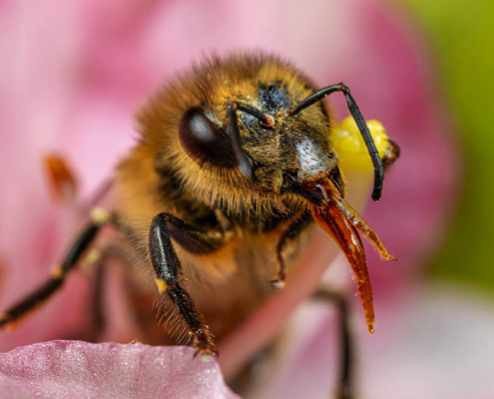
Did you know there are 270 species of bee in the UK? These busy insects play a major role in maintaining biodiversity and are vital for the production of much of our food. World Bee Day is 20 May, so what better time to think about how you can help bees in your backyard? Plant pollinator-friendly plants or go chemical-free. bbka.org.uk/world-bee-day-events
Countryfile on TV
BBC ONE, SUNDAYS

23 April Charlotte Smith and Hamza Yassin visit Dumfries House in East Ayrshire to explore how King Charles III has been a champion for farming and the countryside. 30 April In this lambing special, Adam Henson helps with outdoor lambing on North Uist, while paralympian Sammi Kinghorn helps out on her dad’s farm on the Scottish border. 7 May Margherita Taylor and Matt Baker are in the New Forest to catch up with the Ukranian refugees they met last year.
This month on the Plodcast
GET ACTIVE
Beginning this spring, a new season of our award-winning Plodcast looks at getting active in nature. From birdwatching and hiking to paddleboarding and cycling, we’ll be investigating different ways of exploring the countryside and getting closer to nature. As usual we will have intriguing guests and some great encounters with our wonderful wildlife. Find us on Spotify, Apple Podcasts and all good pod providers.
MUST-VISIT
Stonehenge of the North
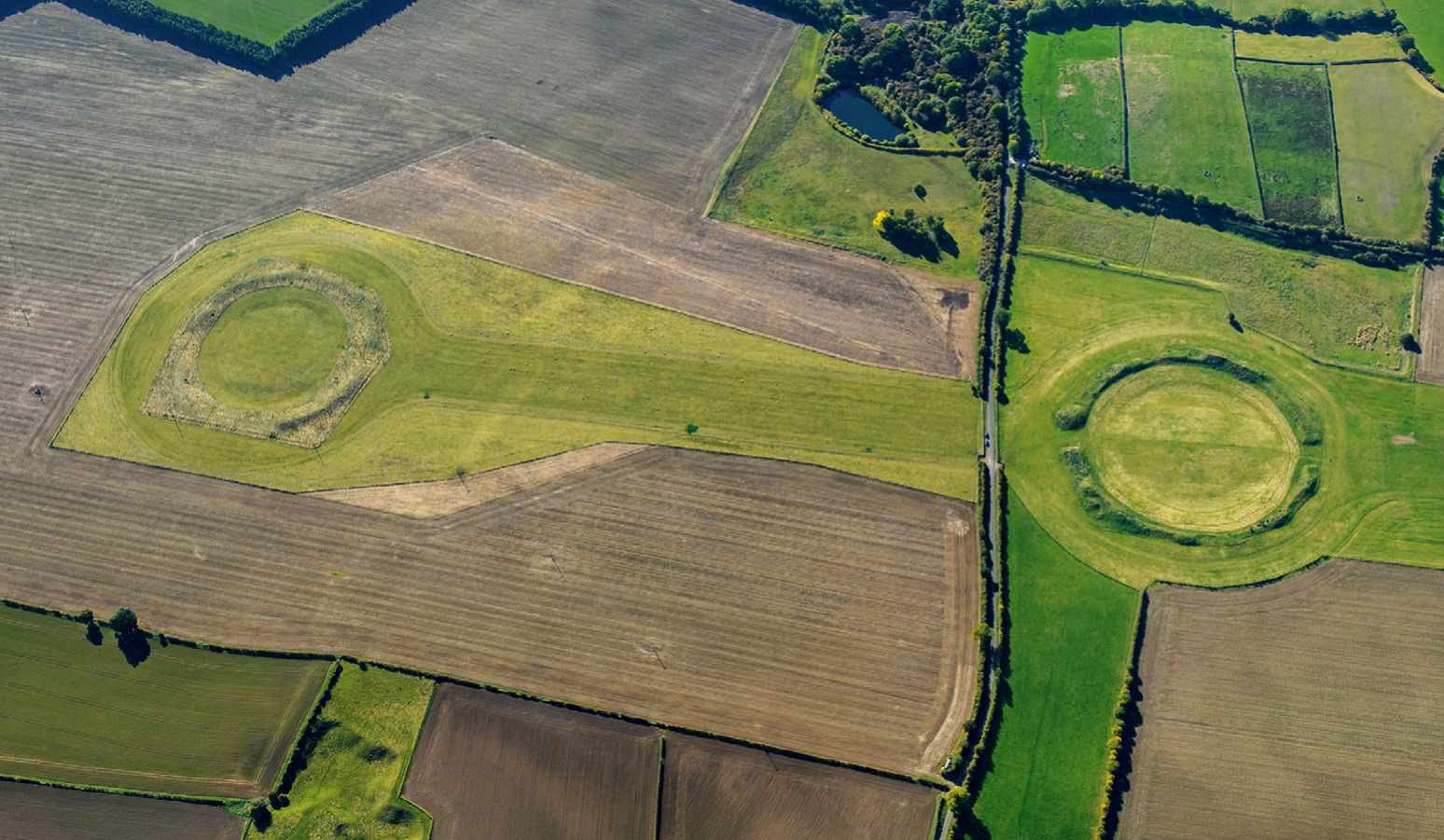
English Heritage and Historic England have announced the acquisition of two vast henge monuments and their surrounding landscape near Ripon in North Yorkshire. The two 200m-diameter henges, known as Thornborough Henges, form part of a Neolithic complex (dating from 3500 to 2500 BC) and have been dubbed the ‘Stonehenge of the North’. Thought to have been part of a ‘ritual landscape’, it is considered to be the most important single ancient site between Stonehenge and the Orkney Islands. The henges are now under the care of English Heritage and are free to visit. As part of its interpretation programme, the charity will share Thornborough Henges’ stories and explain its significance. english-heritage.org.uk
Make do and mend
HOW TO CLEAN WALKING BOOTS
May is National Walking Month so this is the perfect time to learn how to care for your boots
You will need: stiff hand brush; some warm water (or a specialist boot cleaning product); soft hand brush or sponge.
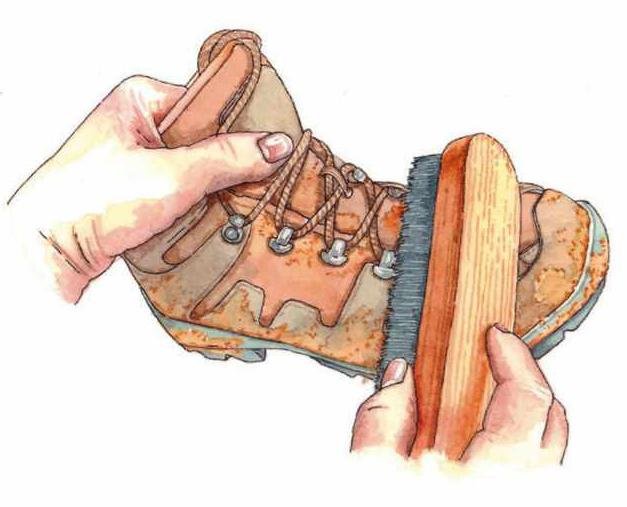
1. Use a stiff brush to remove the worst of the mud or dirt from the upper and outsole (tread) of the boot. To avoid getting your house messy, it’s best to do this outside, once the mud has dried.
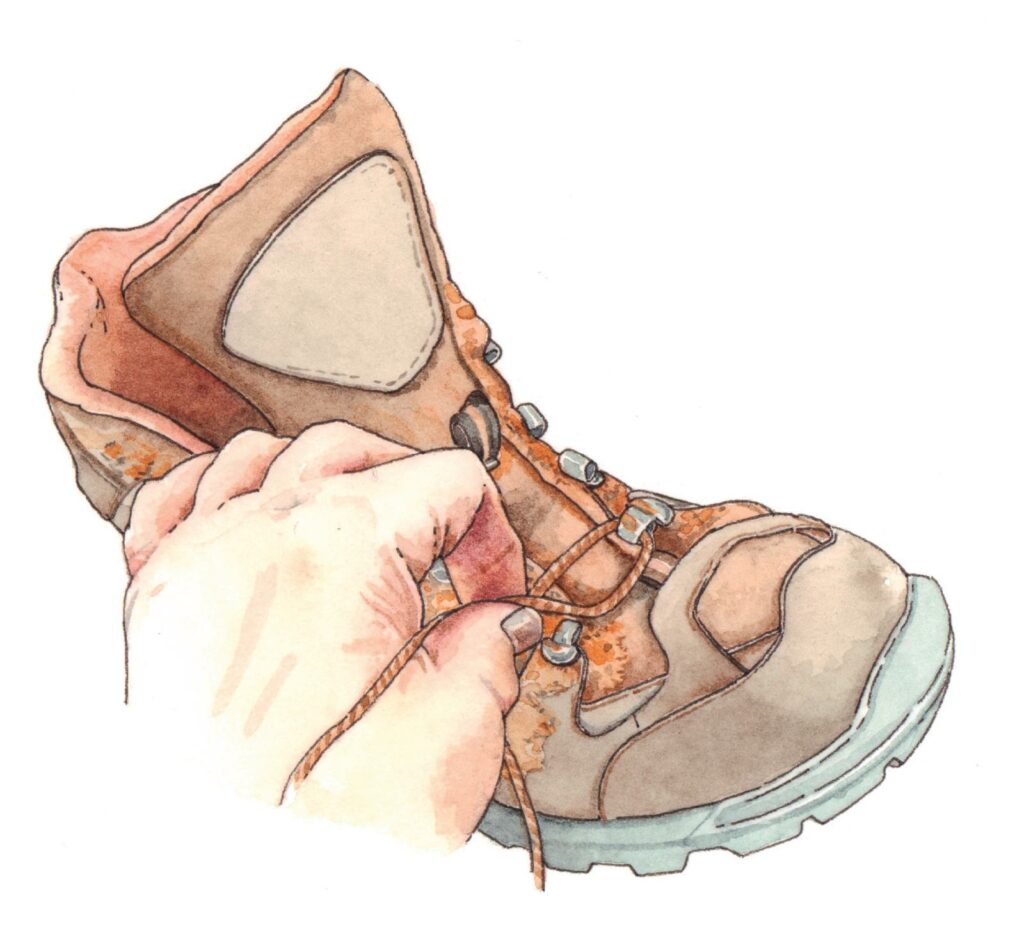
2. Remove the laces and insoles, then use the brush to get rid of any dirt in the folds of the tongue and around the lace eyelets. You can use an old toothbrush to get in the hard-to-reach spots.
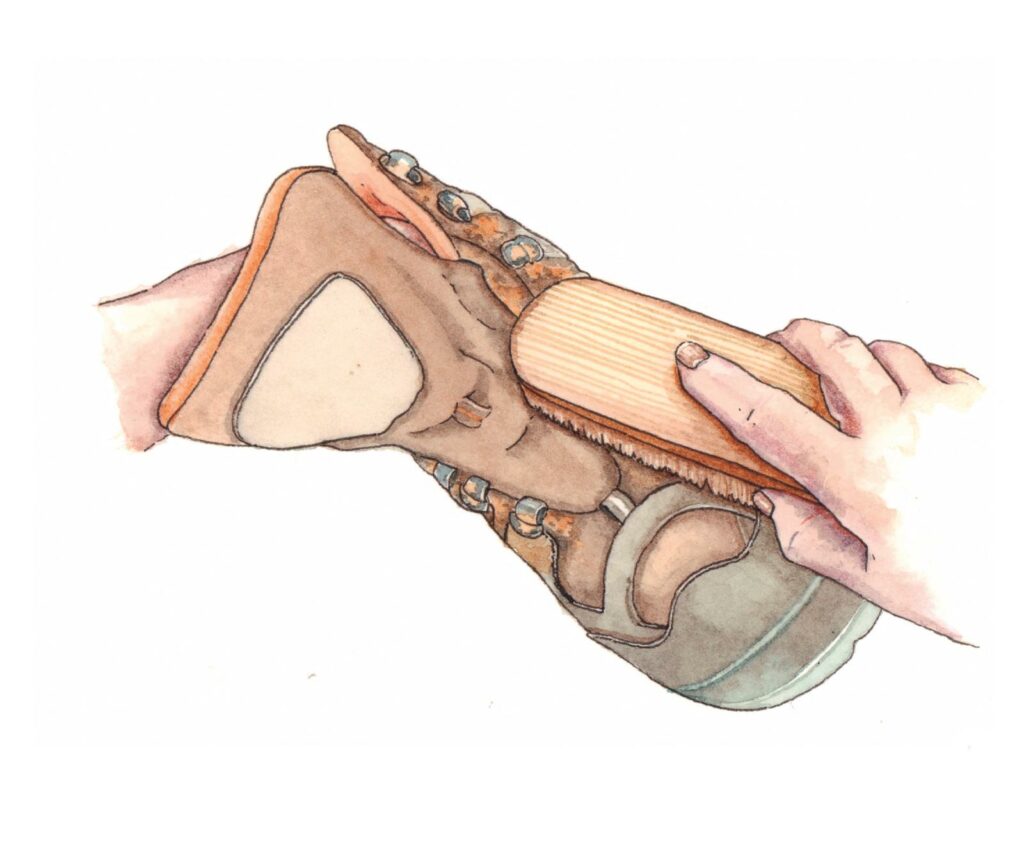
3. Use a soft brush or sponge and a small amount of warm water to gently wash away the remaining mud, dirt and stains from the boot. Be as sparing with the water as possible; you don’t want them to get too wet.

4. Leave your shoes to dry at room temperature, away from direct sunlight and radiators. Once dry, re-thread the laces and insert the insoles. Your boots can now be stored away, ready for your next walk.
ID GUIDE
WARBLERS OF BRITAIN
Spring would not be the same without our warblers. Dominic Couzens reveals how to tell these often restless, delightful-sounding songsters apart
Listen!
Mark International Dawn Chorus Day (7 May) with Scotland Outdoors on BBC Sounds: bbc.co.uk/sounds/play/p0c5x5r6
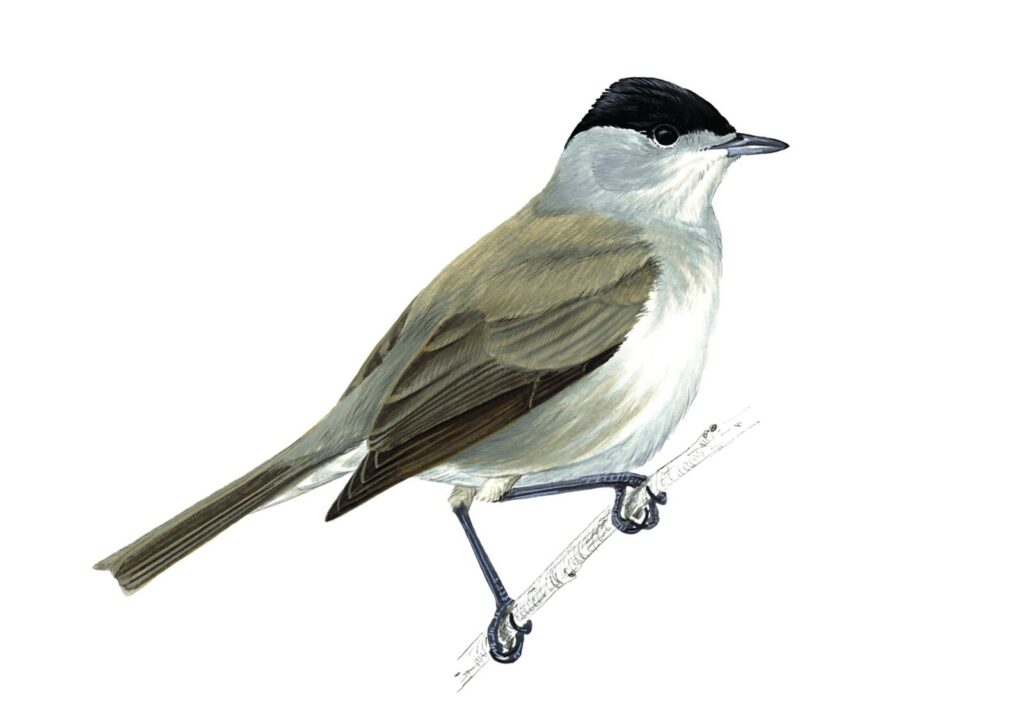
BLACKCAP
Sylvia atricapilla
The only warbler to visit garden feeders, this has a distinctive black (male) or brown (female) cap and a strong, fluty song. Common, here March–October.
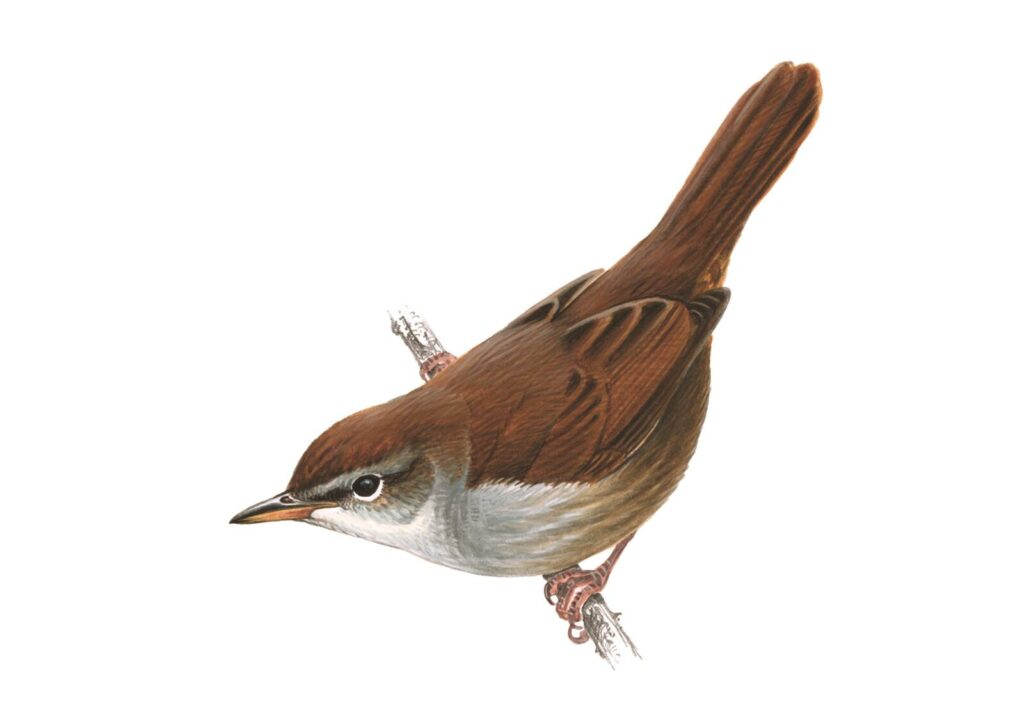
CETTI’S WARBLER
Cettia cetti
Warm brown with a large tail and explosive song, this recent colonist of dense waterside vegetation lives mainly in south Britain. Scarce, resident all year.
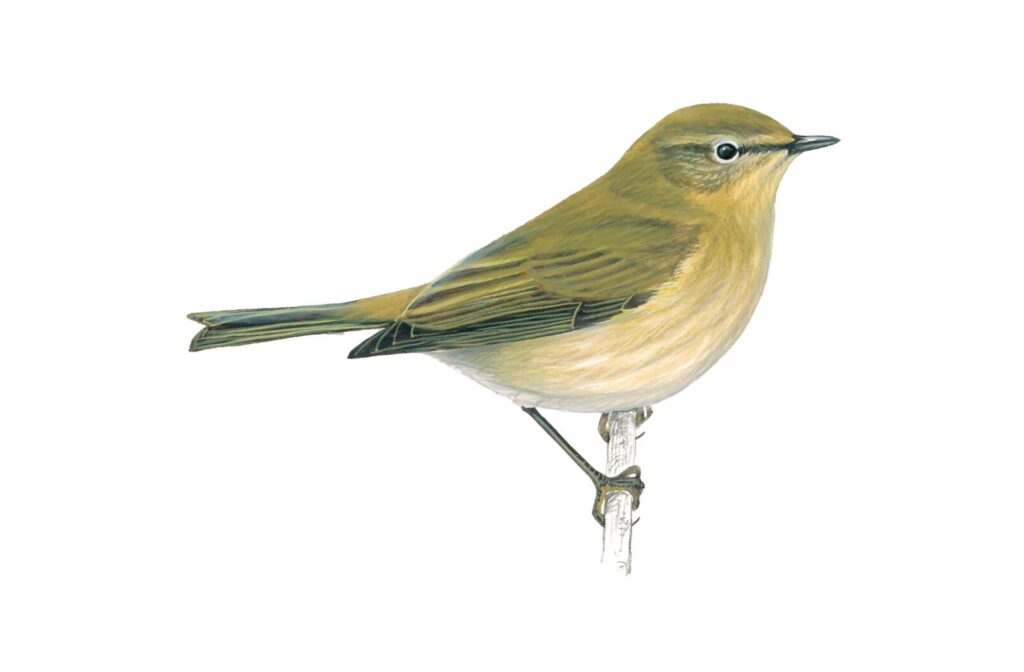
CHIFFCHAFF
Phylloscopus collybita
The flitty, olive-green chiffchaff is mainly seen in woods with tall trees. Listen for its repeated “chiff, chaff” phrases. Common, here March–October.
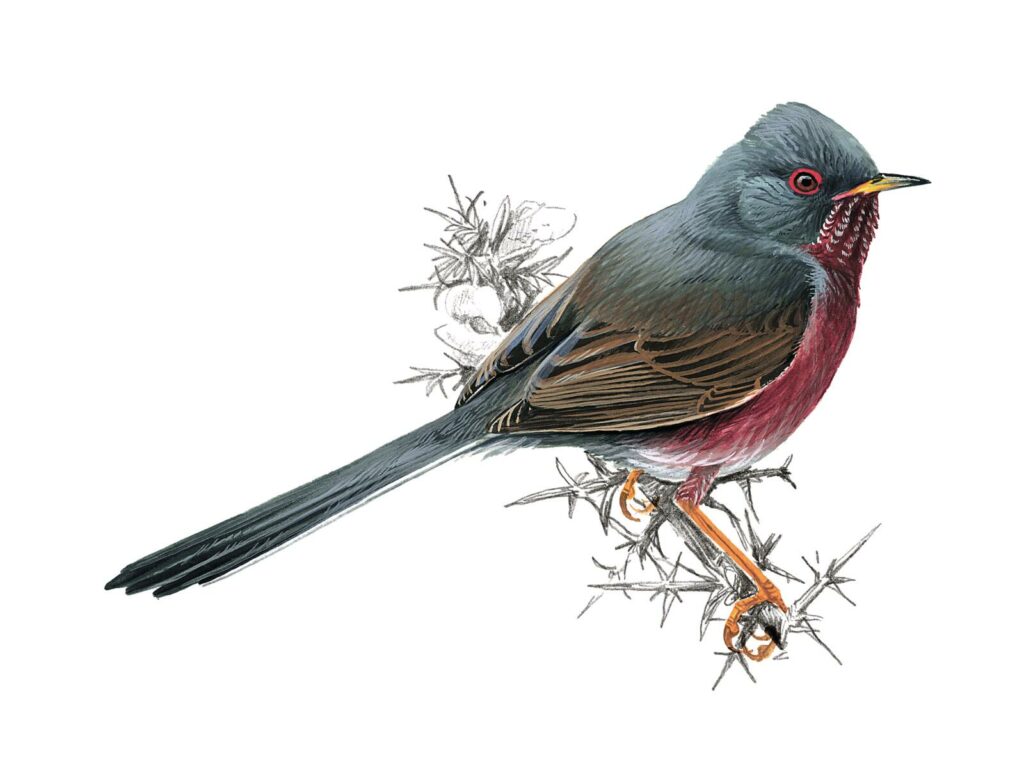
DARTFORD WARBLER
Sylvia undata
With a long tail, tiny body, raspberry red underparts and a red eye, this bird of lowland heaths is rare and resident.
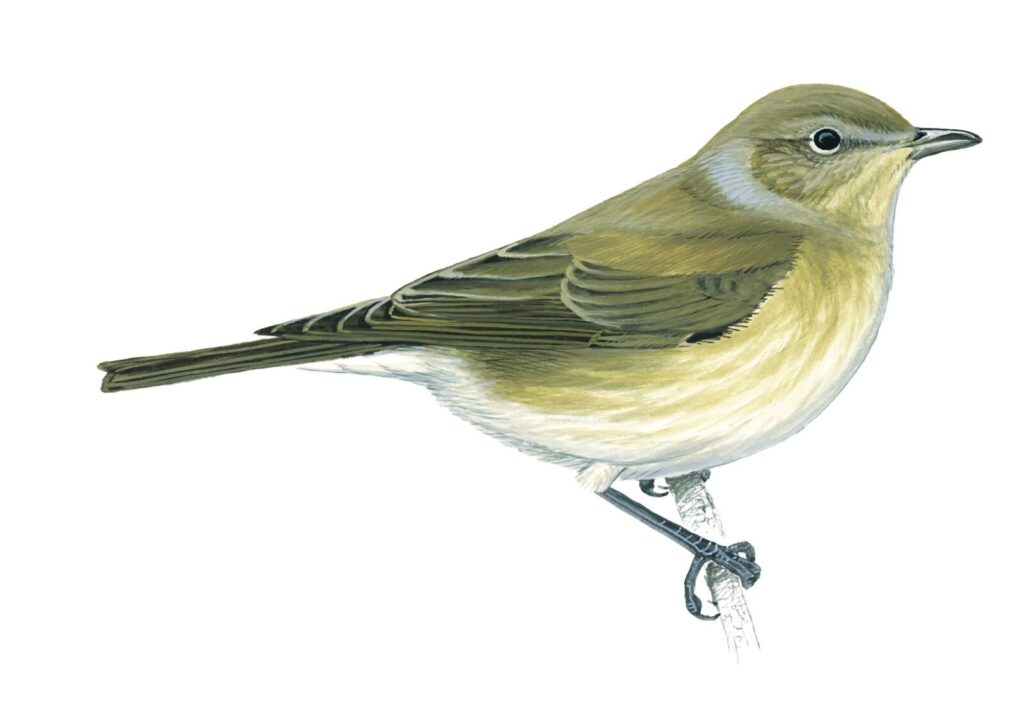
GARDEN WARBLER
Sylvia borin
A classic small brown bird of tall scrub, the garden warbler has no obvious features save its lively, babbling song. Fairly common, April–August.
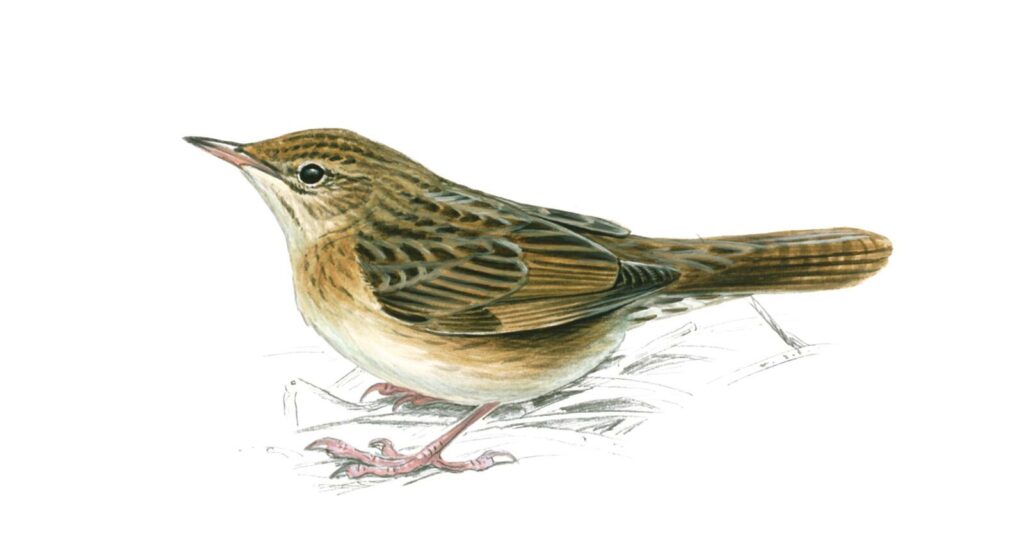
GRASSHOPPER WARBLER
Locustella naevia
Despite its freckled body, heavy tail and insect-like song, this is tricky to spot. Uncommon, April–October.
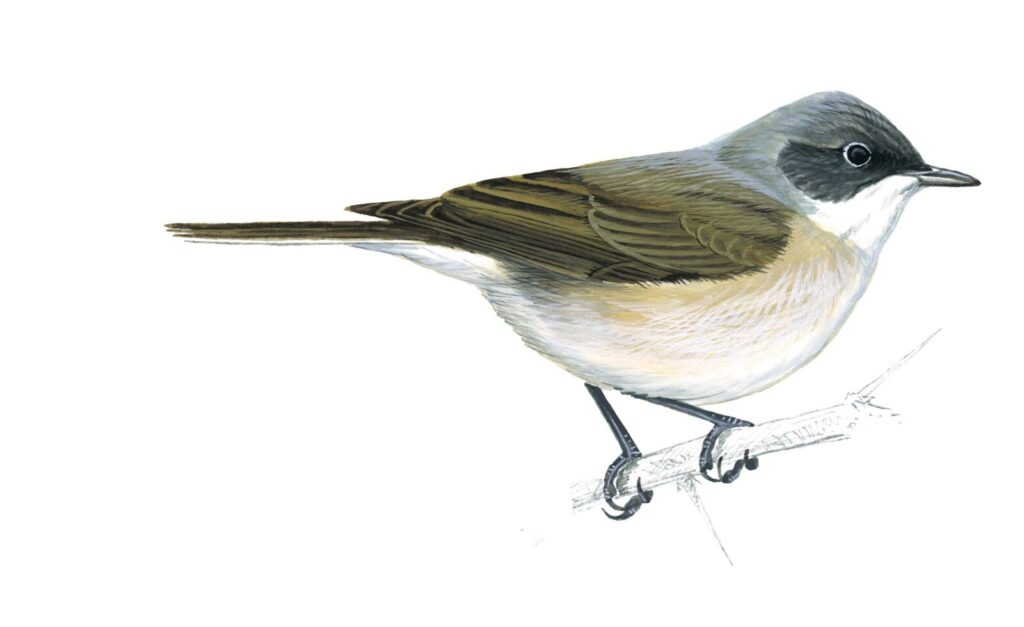
LESSER WHITE THROAT
Sylvia curruca
Pristine white below, with a dark upper and black legs, this bird of tall scrub has a rattling song. Scarce, April–October.
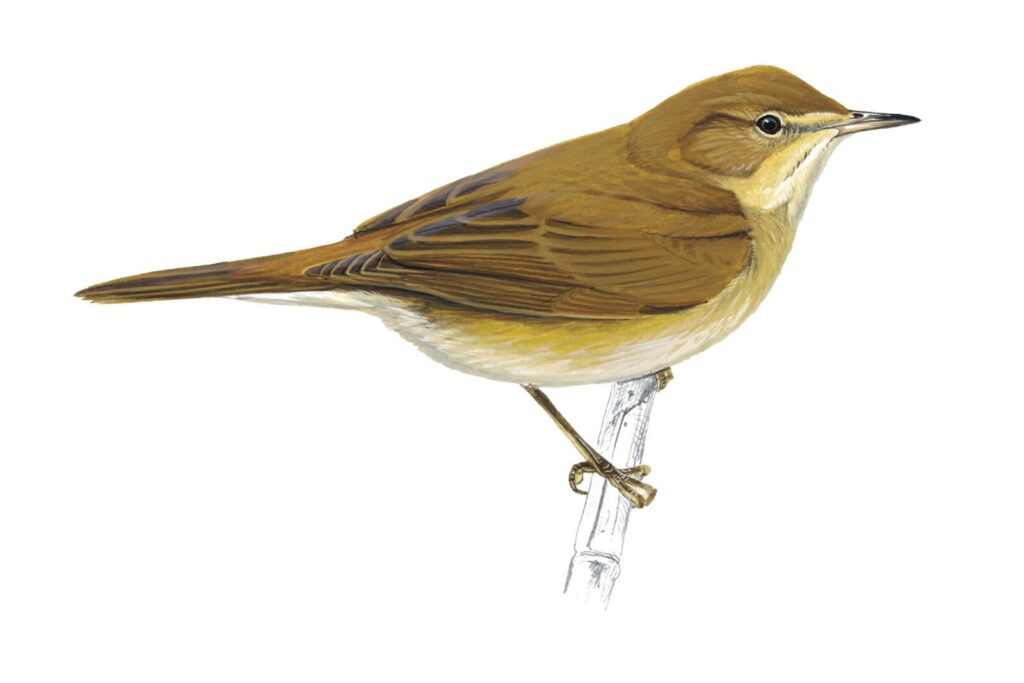
REED WARBLER
Acrocephalus scirpaceus
Spring marshes resound to the grumpy, rhythmic song of this sharp-beaked and arrow-headed bird. Common, here from April–September.

SEDGE WARBLER
Acrocephalus schoenobaenus
Identified by its whitish eyebrow, this warbler has a wildly fluctuating, turbocharged song. Common, April–September.
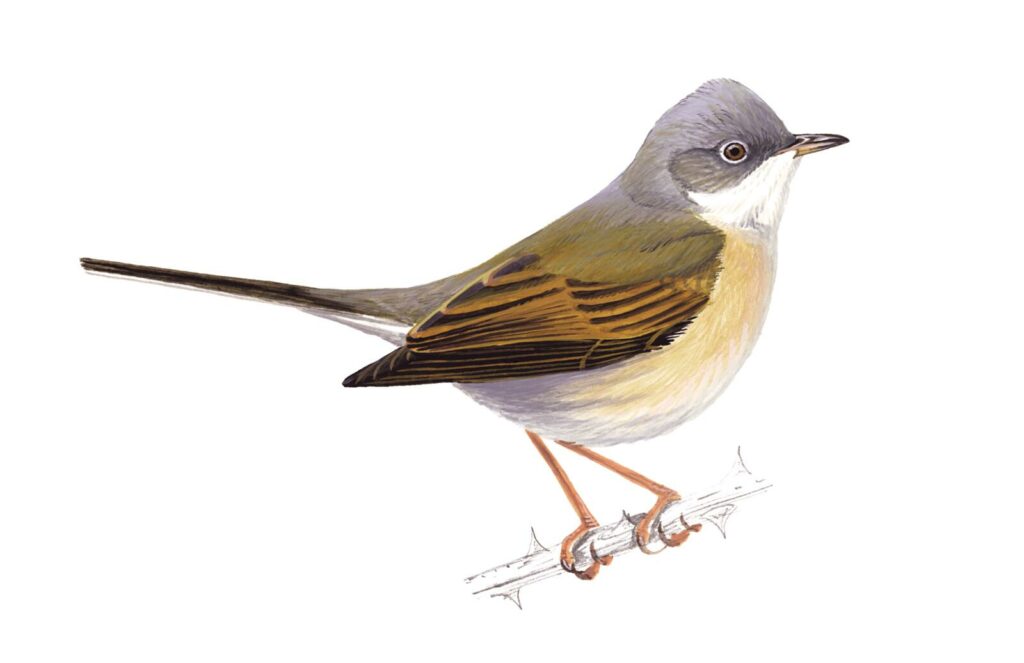
WHITETHROAT
Sylvia communis
This zestful, restless and sun-loving bird has a white throat and is seen atop bushes singing its short, scratchy song. Common, April–October.
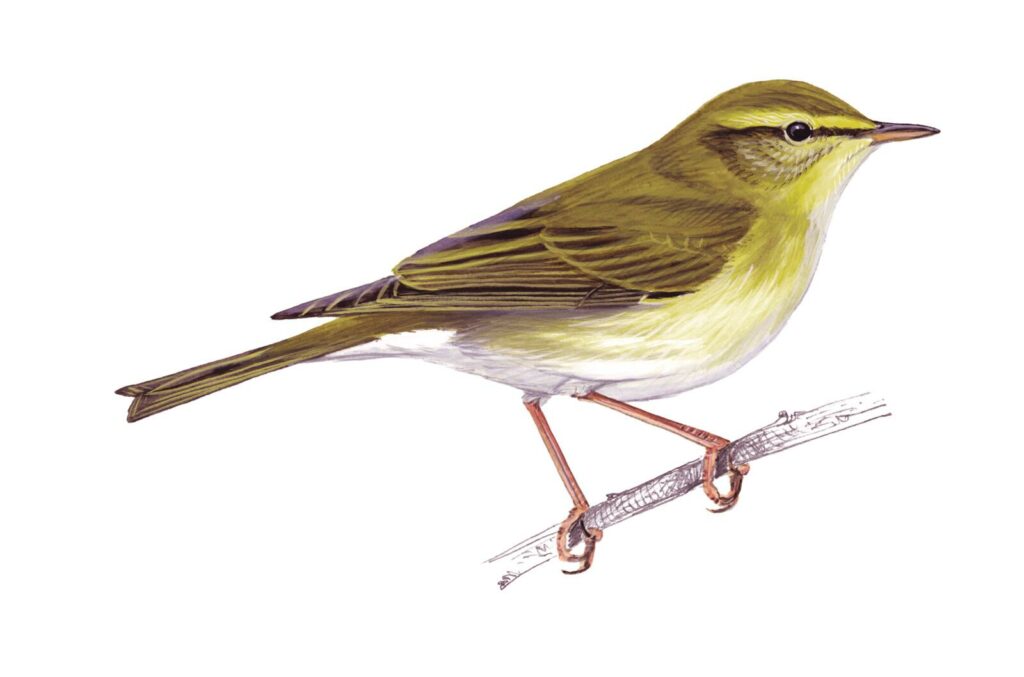
WILLOW WARBLER
Phylloscopus trochilus
A small, greenish bird the size of a tit, the willow warbler has a gorgeous, gentle song, a soft lilting down the scale. Common, April–September.
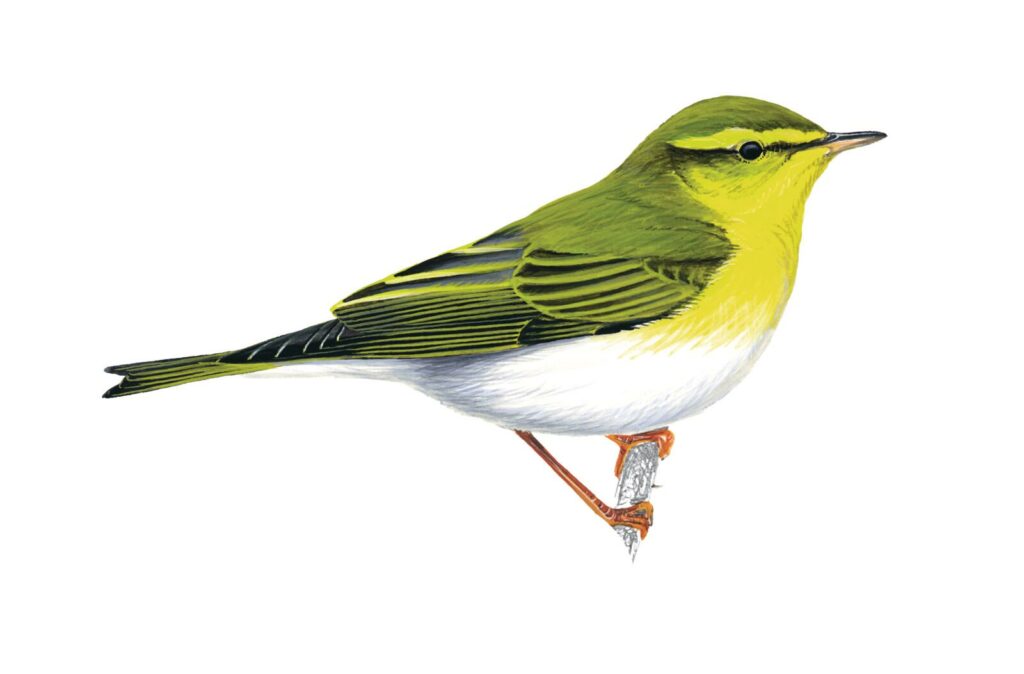
WOOD WARBLER
Phylloscopus sibilatrix
This fast-declining bird with a shivering trill song has bright yellow on its face, beechgreen wings and a white belly. Scarce, April–August.
LATE-SPRING SALAD
New potatoes, eggs and asparagus – is there a holier trinity? If you’re making this gorgeous salad for a picnic, try to bring it together at the last minute, as it will always taste better if it has escaped the icy clasp of the fridge. You can finish the salad at your lunch spot by adding the eggs, a scattering of fresh herbs and the remaining dressing.
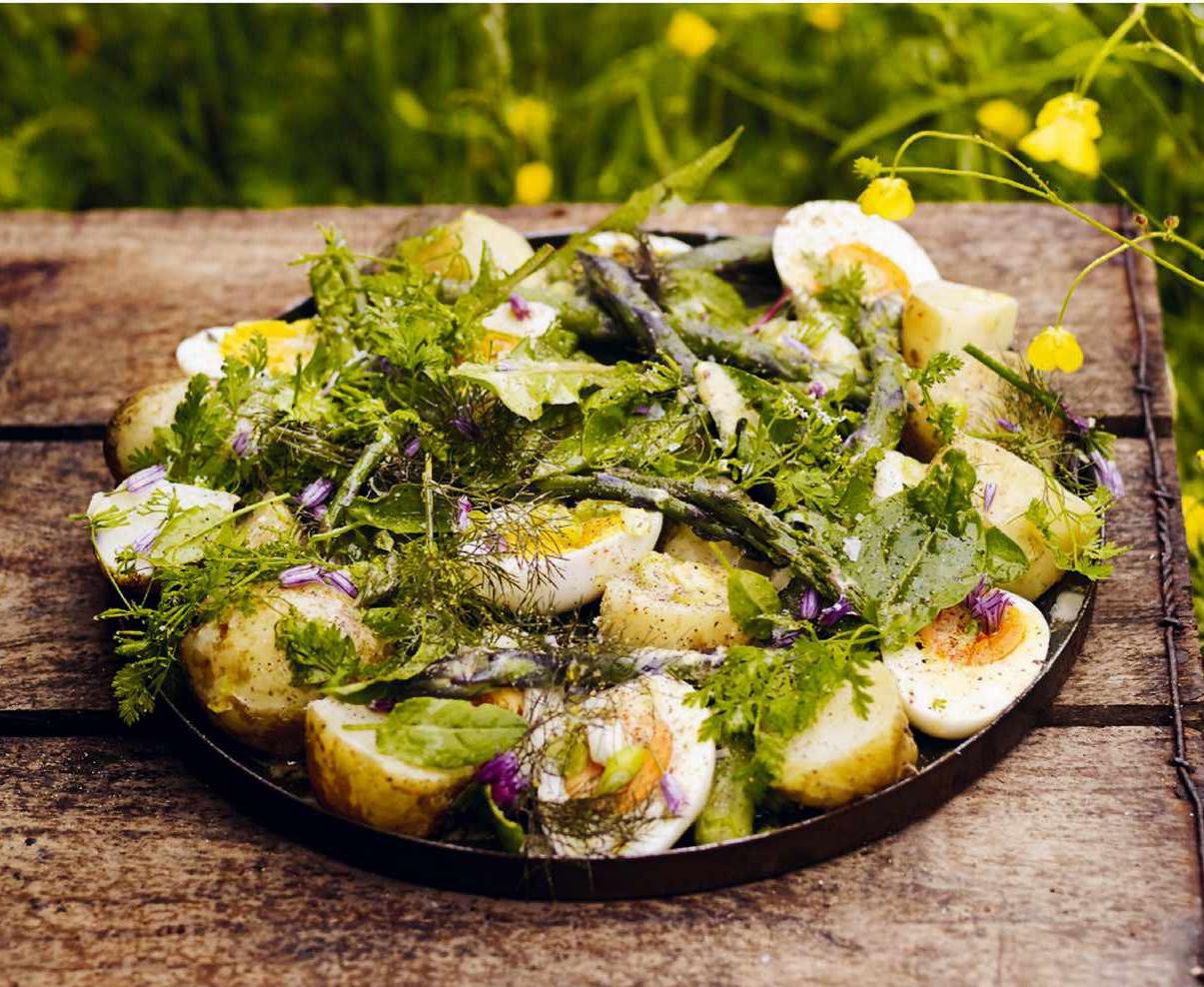
SERVES 4–6
• 4–6 eggs, at room temperature
• 750g small–medium new potatoes, scrubbed
• 12 asparagus spears
• A bunch of spring onions, thinly sliced
• A few handfuls of soft herbs, such as flat-leaf parsley, chives, chervil or basil
FOR THE DRESSING
• 2 tsp Dijon or English mustard
• 2 tbsp extra-virgin olive oil
• 1 tbsp sunflower oil
• 2 tbsp red wine vinegar or apple cider vinegar
• 1 tbsp runny honey
• 1 garlic clove, bashed
• Sea salt and freshly ground black pepper
1 First, make the dressing. Put all the ingredients in a small jug, season with salt and pepper, and whisk
2 until thoroughly combined. Set aside. To cook the eggs, bring a medium pan of water to a boil. Carefully add the eggs to the water, bring it back to the boil and cook for 6½ minutes. Drain the eggs, then run them under a cold tap to stop them cooking. Peel the eggs then set them aside.
3 Place the potatoes in a large pan. Cover generously with cold, salted water, set over a high heat and bring to a boil. Cook the potatoes for 8–15 minutes (cooking time will vary according to the variety and freshness of the potatoes), until tender. A couple of minutes before they are ready, snap the woody ends from the asparagus and add the spears to the water. Make sure they are submerged
4 sothey cook evenly. After two minutes, drain the potatoes and asparagus in a colander, and then carefully return them to the pan. Add the spring onions and spoon over half the dressing, season with some salt and 5 pepper, gently combine and leave to cool. Cut the eggs in half with a sharp knife. Arrange the potatoes and asparagus on a serving plate or in a picnic-friendly alternative – Iused the lid of a biscuit tin. Nestle in the eggs, roughly tear the herbs (there’s no need to chop them – just remove the coarser stems) and scatter them over the eggs, potatoes and asparagus. Trickle over the remaining dressing before serving.
Recipe from Outside: Recipes for a Wilder Way of Eating by Gill Meller (Quadrille, £30).